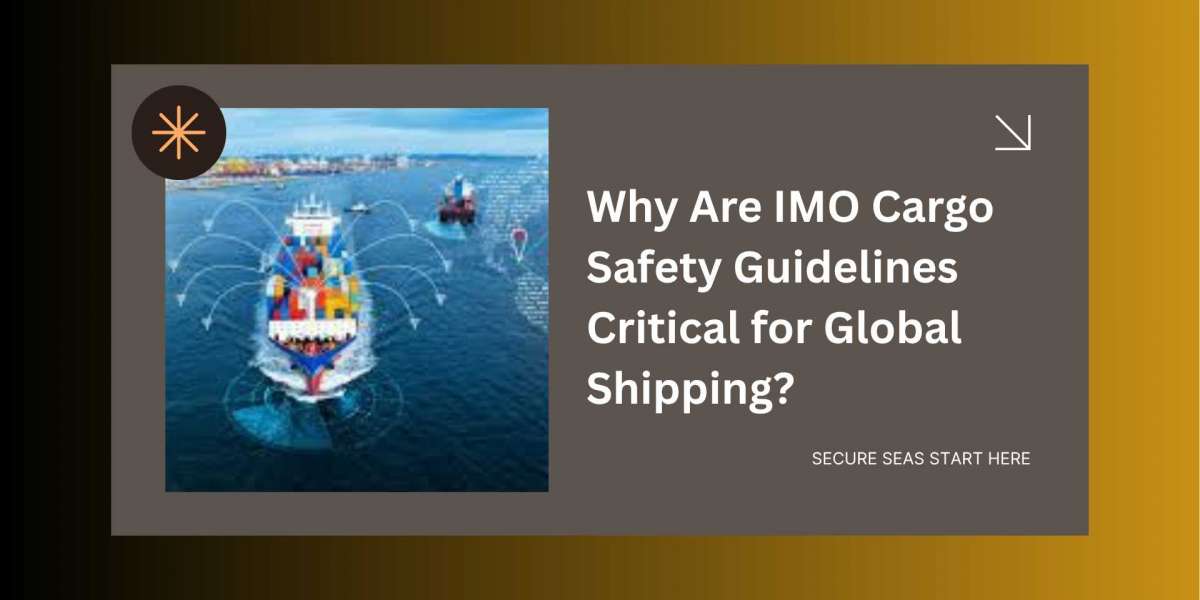Global trade relies heavily on maritime transport. Every day, thousands of cargo containers are shipped across international waters, making safety and compliance essential to prevent accidents, delays, and environmental damage. The International Maritime Organization (IMO) plays a vital role in setting the standards that keep global shipping safe, efficient, and regulated.
These IMO cargo safety guidelines impact every stakeholder involved in maritime logistics — from exporters and freight forwarders to packaging suppliers and shippers. Understanding and following these regulations is crucial for smooth operations and legal compliance.
1. What is the International Maritime Organization (IMO)?
The IMO is a United Nations agency responsible for the safety and security of international shipping. It was established to create a uniform regulatory framework across the maritime industry. The organization develops and maintains a comprehensive set of regulations, including those that govern the safety of cargo at sea.
Key goals of the IMO include:
Ensuring safe maritime practices
Reducing marine pollution
Promoting secure transportation of cargo
Facilitating fair and consistent shipping regulations worldwide
2. Why Cargo Safety Guidelines Matter
Cargo that is not properly secured or declared can lead to significant hazards:
Shifted or collapsed cargo causing vessel imbalance
Fire or chemical hazards due to improperly handled dangerous goods
Crew injuries and fatalities
Loss of goods and environmental threats
IMO guidelines help prevent these issues by ensuring proper cargo handling, packaging, and documentation. These rules serve as a foundation for a safer global supply chain.
3. Key IMO Regulations on Cargo Safety
Several important IMO codes and conventions govern how cargo should be packed, labeled, stowed, and transported.
Important Guidelines Include:
IMDG Code (International Maritime Dangerous Goods Code):
Regulates the shipment of hazardous materials, including classification, packaging, labeling, and handling.CSS Code (Code of Safe Practice for Cargo Stowage and Securing):
Provides instructions on proper securing techniques for various types of cargo.SOLAS (Safety of Life at Sea Convention):
Includes rules for verifying container weight and safe vessel operations.CSC (International Convention for Safe Containers):
Ensures containers used at sea are structurally sound and regularly inspected.
These regulations are continuously updated to adapt to emerging technologies and cargo types.
4. Packaging: The First Step Toward Safety
Cargo safety begins well before the shipment is loaded onto a vessel — it starts with how the goods are packed. Improper packaging is one of the leading causes of in-transit damage and compliance failures.
Businesses must use durable, high-quality materials that meet international standards. For example, exporters in Saudi Arabia rely on trusted suppliers who provide packaging that complies with IMO guidelines for structural integrity, heat treatment, and secure stacking. Companies like Noor Wood Works, known for providing heavy-duty wooden crates and treated pallets, help exporters ensure that goods are prepared according to international shipping safety regulations.
5. Shipper and Exporter Responsibilities
Shippers play a direct role in cargo safety. They must take proactive steps to ensure compliance with all IMO guidelines.
Shipper Responsibilities Include:
Correctly declaring cargo content and weight
Using certified packaging and containers
Ensuring compatibility of items stored together
Labeling hazardous goods properly
Keeping complete and accurate documentation
Failure in any of these areas can lead to port delays, cargo rejection, or legal penalties.
6. Common Challenges in IMO Compliance
Even experienced exporters and logistics companies sometimes overlook important requirements.
Common Issues:
Inaccurate cargo weight declarations
Unverified container condition
Use of non-certified packaging
Incompatible goods stored together
Missing hazard labels or transport documents
To avoid such risks, many businesses partner with suppliers who understand regulatory standards and provide compliant packaging solutions. This support becomes essential when transporting high-risk or high-value goods across international waters.
7. Benefits of Following IMO Guidelines
While compliance requires effort and investment, the long-term benefits are substantial.
Advantages Include:
Reduced shipping risks and insurance claims
Faster customs and port clearance
Higher customer satisfaction
Increased global credibility
Lower chances of legal or financial penalties
Compliance also shows a business’s commitment to international standards and safe trading practices.
8. Sustainability and Safety Go Hand in Hand
Modern IMO regulations also encourage sustainable shipping. Businesses are expected to minimize environmental risks by:
Avoiding toxic or non-biodegradable materials in packaging
Reducing unnecessary weight and emissions
Using reusable or recyclable packaging when possible
This makes selecting eco-conscious and compliant packaging providers even more important. Manufacturers who align with both safety and sustainability standards, including wood treatment, fumigation, and structural certification, contribute to safer and greener global shipping.
9. Adapting to Changes in Regulations
IMO cargo safety regulations are not static—they evolve as new challenges and technologies emerge. In recent years, updates have included:
Stricter rules for transporting lithium batteries
Cybersecurity protocols for cargo documentation systems
Enhanced container weight verification procedures
Businesses must stay informed and continuously update their practices to meet new standards.
10. Final Thoughts
Cargo safety is a shared responsibility. From packaging to stowage, every link in the supply chain must align with IMO regulations to ensure secure, efficient, and compliant global trade.
Understanding these guidelines isn’t just for shipping companies — it’s also essential for exporters, logistics partners, and packaging manufacturers. By taking the right steps, using approved materials, and working with knowledgeable suppliers, businesses can confidently ship goods across borders while minimizing risk.
Exporters who partner with experienced packaging providers that support IMO standards—such as those supplying heavy-duty, certified wooden crates—are better positioned to meet international expectations and deliver cargo safely across seas.







